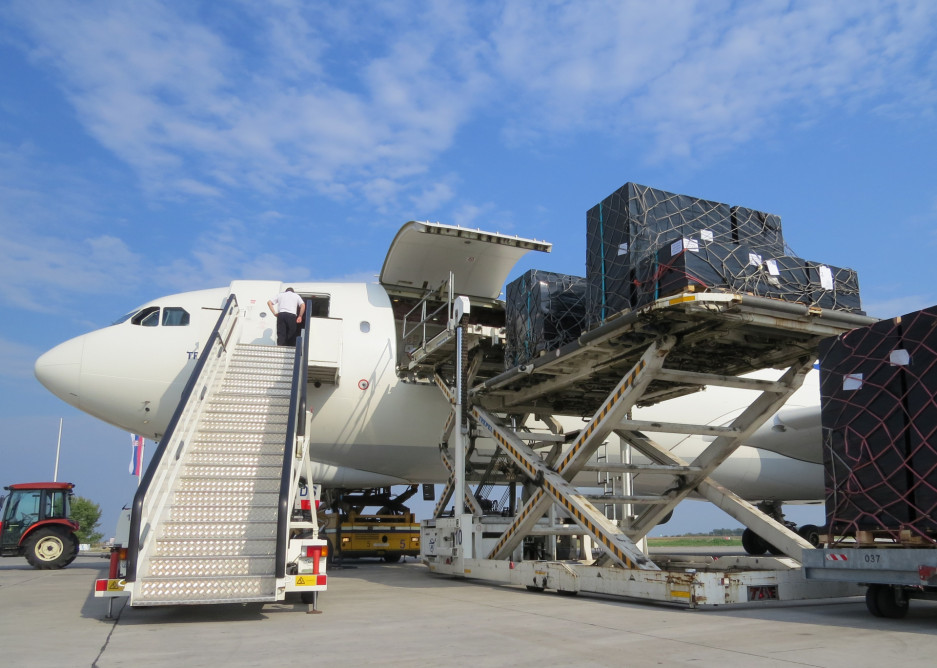
Positive Mobility
eMagTransporting vaccines: a historic challenge for the air transport industry

How can billions of doses of vaccines, some of them requiring storage at -80°C, be transported across the planet? This is the extraordinary challenge facing airlines and airports.
The whole world is in limbo, waiting for a vaccine. Prospects have been brightening since early November, with the Russian Sputnik vaccine and candidates from Pfizer and Moderna all announced as 95% effective. Once the vaccines obtain official approval and following United Kingdom, the first vaccination campaigns could begin by the end of the year. There is no doubt that vaccines will be the biggest story of 2021, bringing with them the hope of a (gradual) return to normal life.
The scientists have played their part. Now it's time for the logistics chain to step up and set in place the best possible conditions for meeting what is already being called “the challenge of the century”. The main task will be distributing billions of doses to every country in the world, in a very short space of time, while maintaining a highly demanding cold chain.
Equivalent to 8,000 Boeing 747 flights
Over half the world's vaccine doses will have to be shipped by air, a mode of transport that offers the speed and reliability needed for the task. Airlines can whisk vaccines around the world in record time, a crucial skill when production centres are spread across the planet in China, the USA, Russia, Brazil and Europe. The air transport industry also benefits from extensive regional coverage, meaning that vaccines can be delivered near to major population centres. The International Air Transport Association (IATA) estimated that transporting vaccines represents the equivalent to 8,000 all-cargo flights for a Boeing 747: the most important operation ever undertaken by the air freight industry.
The vaccines will not simply be transported in passenger aircraft holds. Air bridges have already been scheduled, along the lines of last spring’s shipments of medical equipment. Air France Cargo intends to draw on the lessons learned, as CEO Christophe Boucher explained to the newspaper Ouest France: "During the first lockdown, the air bridge between Asia and France represented more than 135 flights over a four-month period. While the world was on pause and borders were closed, we managed to set up a supply chain that was robust and effective."
Maintaining the (exceedingly) cold chain
Airports are already standing by. While the details of which vaccines will receive final approval remain unclear, we need to prepare for every eventuality. "Distributing the vaccine will be highly complex, especially for those that need to be stored at extremely cold temperatures," points out US infectious diseases specialist Amesh Adalja. This concerns two of the highest-profile candidates: Moderna's vaccine has to be stored at -20°C while the Pfizer version requires storage at an incredible -80°C.
These exceedingly low temperatures represent a considerable challenge to the world freight sector, which is used to transporting vaccines at temperatures between two and eight degrees, nowhere near the same level. Pfizer's vaccine will be shipped in refrigerated boxes specially designed by the US laboratory to maintain arctic temperatures for 10 days. A sensor system will enable real-time monitoring of the temperature inside the boxes. "Some types of refrigerants are classified as dangerous goods and volumes are regulated, which adds an additional layer of complexity," highlights IATA in a recent press release.
Security represents another major issue. Vaccines are highly valuable commodities and the risk of theft is high. Airports will be able to use their experience to tackle the risk. "Mechanisms such as security fences, reduced access to pharmaceutical areas, 24/7 CCTV and intruder alarm systems will all play a key role," predicts an airport industry insider. In France, the gendarmerie is planning to set up a protective bubble around aircraft, similar to the operation in the spring to safeguard mask shipments.
A first plane filled with vaccines in Santiago
Airport operators have their preparations under way as they adapt facilities to ensure they can meet the specific needs of their clients. Measures range from creating new logistics areas to recruiting staff for safeguarding hangars and speeding up customs procedures. Airports that operate as part of a network, such as VINCI Airports, are better equipped to prepare for the "challenge of the century": they can join forces and coordinate effectively with airlines and logisticians between vaccine points of departure and arrival.
In Santiago de Chile, the VINCI Airports concession is ready to tackle the challenge. On 5th November, a first plane filled with vaccines landed at Arturo-Merino-Benítez Airport. On board the KLM Cargo flight were 6,000 doses of the Chinese candidate, CoronaVac, ready for the final trial phase – a sort of dress rehearsal!
Chilean airline LATAM Cargo is all set for the next phase. It is the only airline in South America to benefit from stringent CEIV Pharma certification, issued by IATA and covering the transport of pharmaceutical products. "This certification puts us in a very good position to meet the “‘challenge of the century’", says Cristina Oñate, LATAM Cargo Marketing Director. Once the vaccine is authorized, the Chilean government will be rolling out a widespread vaccination campaign, with 20 million doses announced for the first half of 2021. That’s a lot of vaccines that will have to be transported to Chile!